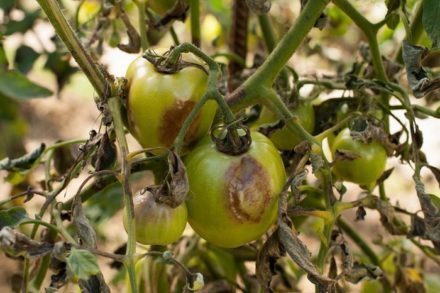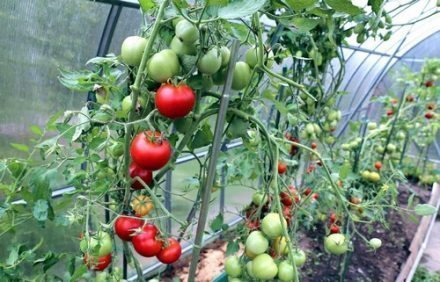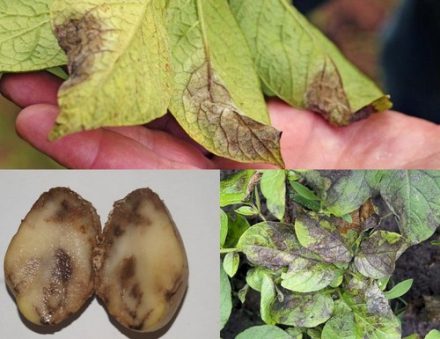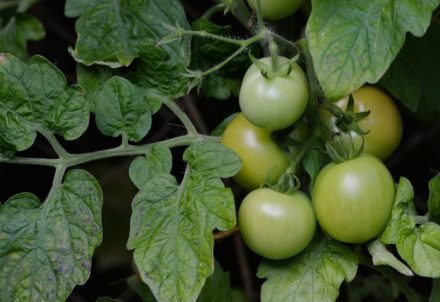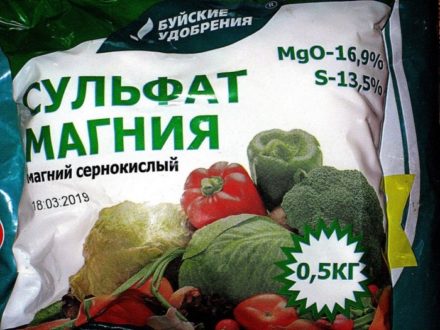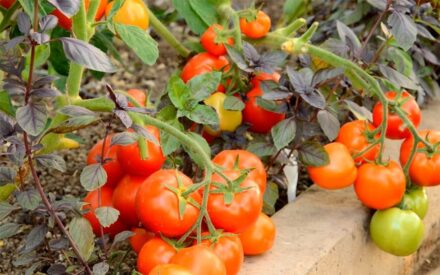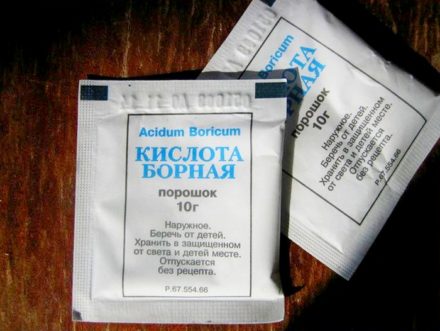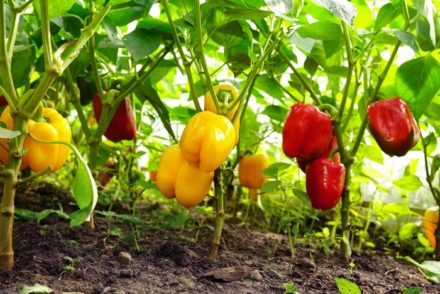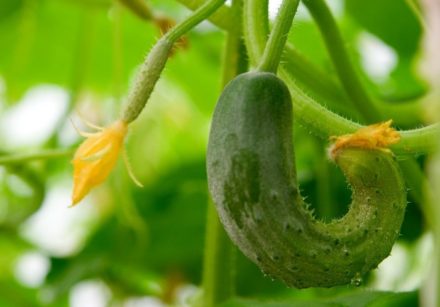Late blight is one of the dangerous diseases that affects tomatoes and other crops of the nightshade family. The disease can completely destroy the bushes and the entire crop. Summer residents try to take measures to prevent the spread of late blight, but at the same time they can make mistakes that reduce the effectiveness of prevention and treatment. Here are the 5 most common mistakes.
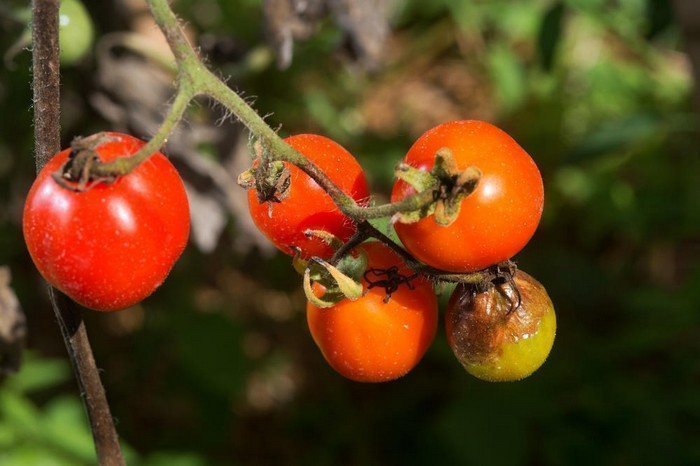
Late start of prevention
There is a strong belief that late blight on tomatoes appears in August along with dew and cold nights. However, this is not true. The disease is caused by the pathogenic fungus Phytophthora. Its spores cannot be seen with the naked eye.
The fungus begins to settle on the bushes in July, and in August it enters the active stage, when symptoms become noticeable. The disease initially manifests itself by the appearance of dark spots on the stems and leaves. The fruits also become spotted and begin to rot.
To prevent severe damage to tomatoes, the first preventive treatment is carried out in mid-July. Later you will need to repeat the spraying several more times. If the summer is cold and rainy, prevention begins in June. In total, you will need to process the bushes 5-7 times. In hot and dry weather, the number of sprays is reduced.
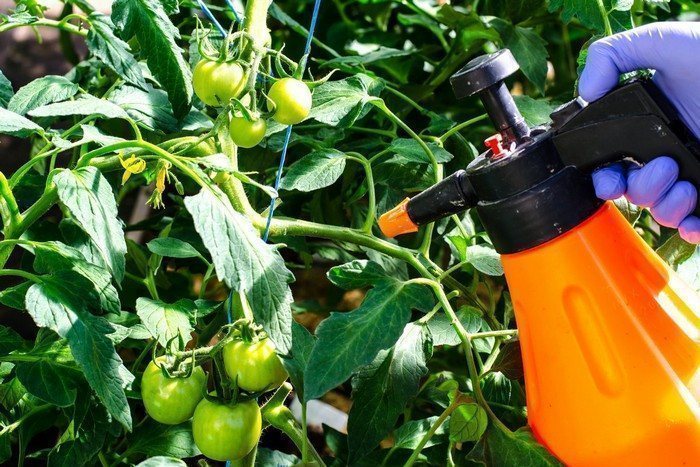
Violation of watering rules
Sometimes summer residents themselves violate the agricultural practices of tomatoes, and then are surprised that they cannot cope with late blight that appears on tomatoes. High humidity promotes active growth of the fungus. It is moisture that gives impetus to the awakening of “sleeping” spores.
Water the tomatoes generously, but not too often, given the weather conditions. If tomatoes are grown in a greenhouse, after watering the structure must be ventilated to reduce air humidity. The ideal watering option for tomatoes is a drip irrigation system. In this case, water is supplied directly to the root zone.
If there are few bushes, you can make homemade installations from 5-liter plastic bottles. They are filled with water and buried with their necks in the ground next to each tomato. Several small holes are first made in the lid.
When watering is carried out from a watering can or hose, water should be applied at the root, avoiding contact with the stems and leaves. It is advisable to mulch the soil surface to reduce moisture evaporation.
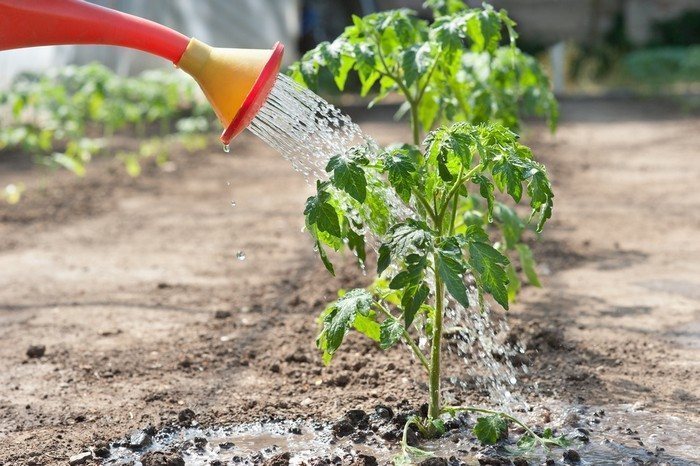
Using folk remedies in the midst of illness
Folk remedies are not as effective as industrial chemicals, but they can be used for preventive purposes when there are no symptoms of late blight on the bushes. In this case, you can use for spraying:
- whey in its pure form;
- a solution based on soap and ash - for 10 liters of water, a 3-liter jar of ash and 2 tbsp. l. garden green soap, leave for 3 days;
- composition with garlic and potassium permanganate - 3 garlic heads and 2 g of potassium permanganate per 10 liters of water, apply immediately.
If signs of late blight have already appeared, use fungicides, taking into account the waiting period for the selected drug. After applying the chemical, at least 2-3 weeks should pass before harvesting.
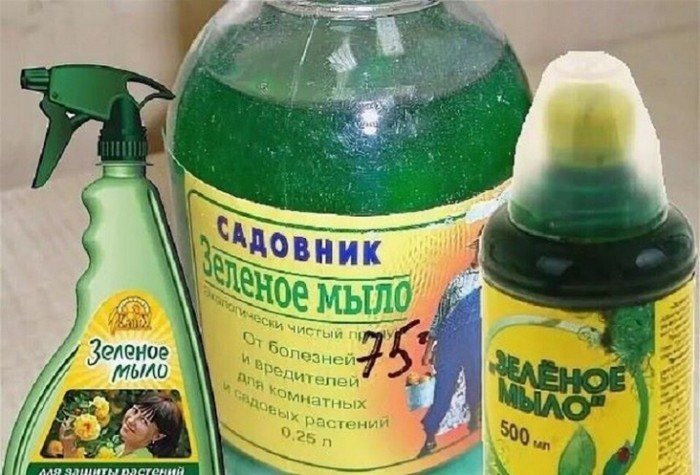
Use of the same biological drug
Biological products fight late blight no less effectively than chemical agents. The following have proven themselves well against late blight:
- “Cedar extract Bio-complex”;
- "Serebromedin";
- "Fitosporin";
- "Agate 25K".
Biological fungicides are used both for the prevention and treatment of tomatoes. The use of the same product or their combination in the tank mixture does not give the desired effect.
The tactic of using different fungicides when alternating them with each other will be more effective. Biofungicides can be applied at intervals of 3-4 days. It is advisable to carry out the first preventive treatment no later than the 20th of July.

Misuse of pesticides
Chemical fungicides differ in composition and principle of action. There are no universal drugs for the treatment of any fungal diseases. You need to select those means that will be effective in the fight against late blight. The best results on tomatoes are shown by:
- "Fundazol". The pesticide not only protects tomatoes from late blight and other fungal diseases, but also fights insects. "Fundazol" is available in powder, soluble in water. After treatment, the effect lasts up to 21 days.
- Bordeaux mixture. A copper-based fungicide has a broad spectrum of action against a complex of fungal infections. The last treatment should be carried out 3 weeks before harvest. No more than 2 sprayings with Bordeaux mixture are allowed per season.
- "Thanos."A modern fungicide used against late blight, powdery mildew, blossom end rot and other fungal diseases on tomatoes. It is applied by spraying with a working solution. Suitable for prevention and treatment. It is allowed to carry out 4 treatments per season.
- "Ridomil Gold". A chemical fungicide based on mancozeb and metalaxyl protects tomatoes from late blight and alternaria. It is applied in the form of an aqueous solution by spraying onto the bushes.
- "Tranquility Moon" A systemic pesticide provides long-term protection against fungal diseases and at the same time increases the crop’s resistance to adverse weather factors and has a positive effect on yield. 4 treatments are allowed per season.
Another mistake is to reduce the dosage of the drug. Fungicides must be used in strict accordance with the instructions given by the manufacturer. If you do not want to spray chemicals, it is better not to reduce the concentration of the product, but to use formulations based on biological components.
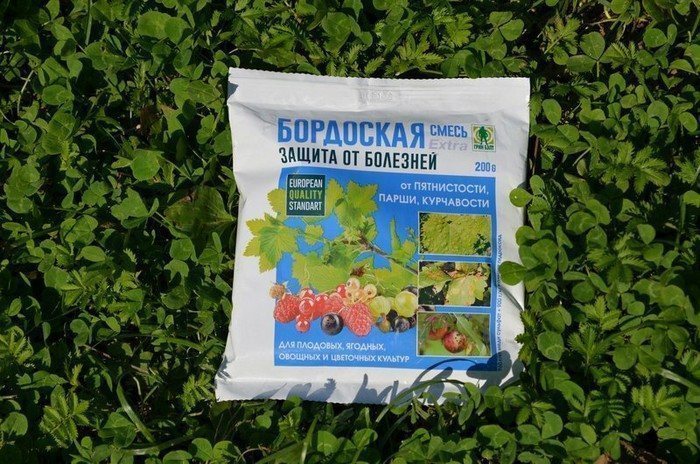
The fight against late blight can be won only by acting methodically and persistently. It is better to start with preventive measures, then it will be possible to avoid an outbreak of the disease, which is already more difficult to cope with. The approach to the use of drugs must be competent. It is imperative to follow the dosage and recommendations for use from the manufacturer.



